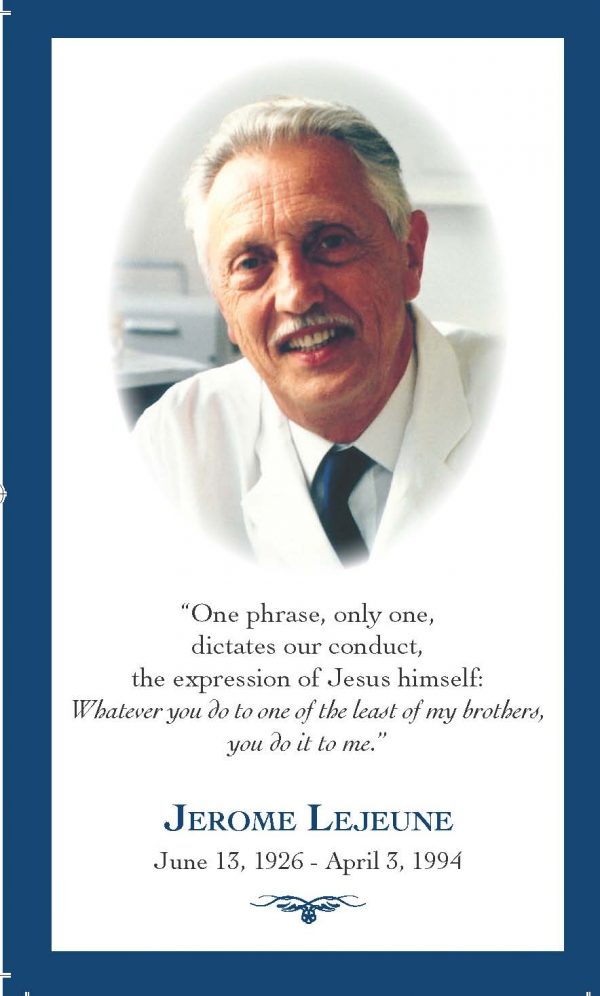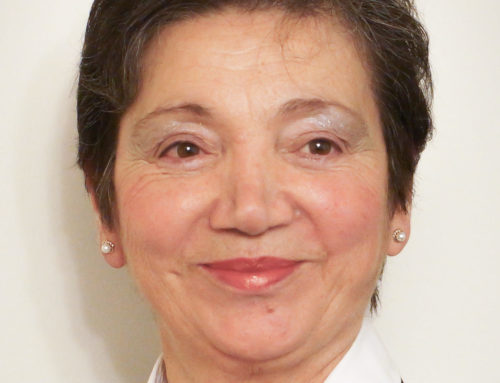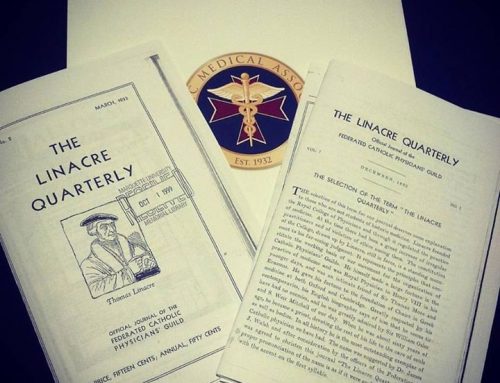Who was Professor Jérôme Lejeune?

His life, his commitment
A physician by vocation, Jérôme Lejeune was confronted with the distress experienced by intellectually disabled children and their families at a very early age. Because medicine was powerless to help these children, Jérôme Lejeune decided to dedicate his life to them. He became a researcher with the aim of penetrating the mystery of how this intelligence impairment prevents people from being truly themselves and bringing relief to the suffering it causes.
Discovery of trisomy 21
In 1958, while working in Prof. Turpin’s laboratory, Dr Jérôme Lejeune discovered the cause of mongolism: an extra chromosome in pair 21. On 26 January 1959, the Académie des Sciences published his scientific work (Jérôme Lejeune, Marthe Gautier and Raymond Turpin. Human chromosomes in tissue culture. C. R. Acad. Sciences, 26 January 1959). This condition would henceforth be called trisomy 21.
More about the history of the discovery…
For the first time in the world, a link had been established between an intellectual disability and a chromosome abnormality. Parents of Down syndrome children could now take comfort that their child’s handicap was an accident and not a hereditary disease. He subsequently discovered the mechanism of many other chromosome abnormalities, thereby opening the way to cytogenetics and modern genetics.
Heading the cytogenetics unit at the Hôpital Necker- Enfants Malades in Paris, his consultations became amongst the most sought after in the world. Helped by his co-workers, he investigated over 30,000 chromosome cases and treated more than 9,000 persons afflicted by intelligence disorders.
He was deeply convinced that all progress towards a cure for one of these diseases would provide the key to heal the others.
His utmost concern was to one day succeed in healing the patients who came to see him from around the world. However, to his great despair, he could not fail to note the excesses that followed: it became “fashionable” to do away with the sick when we are unable to cure them.
A life long commitment
Although the results of his research should have helped medicine to advance towards a cure, they are used to identify children carrying these diseases as early as possible, usually with the aim of terminating pregnancy.
It was for these patients that he took a firm stance in favour of life as soon as the pro-abortion laws were drafted in western countries: he gave hundreds of conferences and interviews across the globe in defence of life. In 1974, Pope Paul VI appointed him to the Pontifical Academy of Sciences. In 1981, he was elected to the French Academy of Moral and Political Sciences. In 1994, he became the first Chairman of the Pontifical Academy for Life founded by Pope John-Paul II. He died of cancer on the 3rd of April 1994, Easter morning, thirty-three days after his appointment.
During the World Youth Days in Paris in August 1997, the Pope visited his friend’s grave in Chalô Saint Mars. The cause for the beatification and canonisation of Jérôme Lejeune was opened in Paris on 28 June 2007. The Jérôme Lejeune Foundation was created and state-recognised as a public asset in 1996 in furtherance of Professor Lejeune’s action. It has a triple mission: research, heal, defend.








